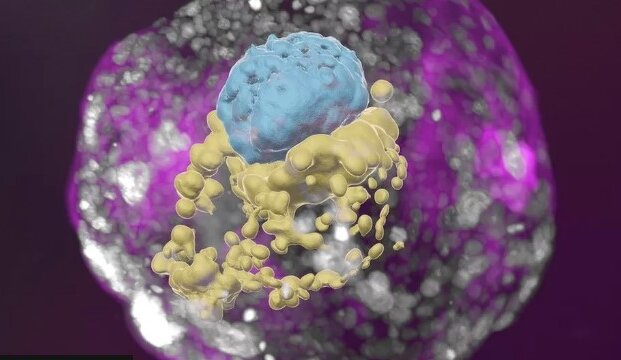Researchers at Israel’s Weizmann Institute of Science have successfully built synthetic models of 14-day-old human embryos derived solely from lab-grown stem cells.
The journal Nature published the research, offering an unprecedented look into the mysterious early phases of human development. This breakthrough could pave the way for new studies into infertility, birth abnormalities, and organ growth.
The Weizmann team, led by molecular biologist Professor Jacob Hanna, began with two types of stem cells: those reprogrammed from adult skin cells and those obtained from established lab-grown stem cell lines.
Using a specialised technique developed by Hanna in 2013, they reverted the cells to an earlier, more flexible “naive” state resembling a 7-day-old embryo ready for implantation.
The researchers divided the naive stem cells into three groups – embryo, yolk sac, and placenta – and then administered drugs to guide them to their respective developmental paths. When joined under optimal conditions, around 1% self-organized into sphere-shaped synthetic embryos with the complex architecture of a 14-day-old human embryo.
These synthetic models, crucially, had components that earlier stem cell-derived aggregates lacked, such as the placenta, yolk sac, chorionic sac, and hormone-producing cells.
Their internal organization mirrored human embryo schematics under the microscope, convincing the researchers that their 14-day milestone had been truly accomplished.
According to Hanna, the first month marks a critical yet little understood period when the implanted cell clump becomes a structured embryo containing every organ. “Our stem cell-derived model offers an ethical route to study this ‘black box’ phase by closely mimicking natural development.”
By analyzing developmental problems caused by improper envelopment of embryos, his team has already gained fresh insights into early pregnancy loss. Further study using the accurate models could help identify the causes of infertility and birth problems, enhance drug safety studies, and boost efforts to generate transplantable tissues and organs.
Hanna’s synthetic embryos allow human development to be studied scientifically beyond the 14-day legal limit by ethically avoiding the use of fertilized eggs. “This breakthrough opens up new possibilities,” he declared. “Our models will aid in revealing the complex forces that drive early embryonic growth.”
Source:IT








 Finance
Finance







